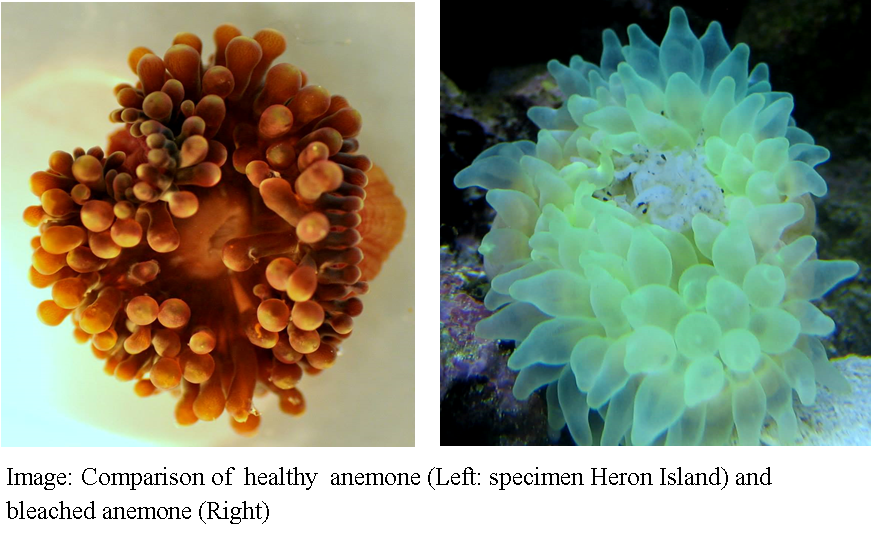Conservation & Threats
E. quadricolor is not listed in the IUCN red list and it's conservation status is not readily discernible. However, this species has been found in reasonably high densities in many regions across it's global distribution (Richardson et al 1997). Despite this it must be acknowledged that these anemones are popular aquaria items and may be threatened by commercial harvest. Additionally, the predicted continued oceanic warming with climate change may threaten this species with thermal bleaching and increased storm damage.
Warming Oceans
The fourth report (AR4) from the Intergovernmental Panel for Climate Change released in 2007 identified that ocean surface temperatures had increased, absorbing more than 80% of additional heat added to the climate system, and would continue to do so (Item 10b). The fifth report (AR5), due to be released in 2014 is expected to reiterate these points. Ocean temperature increase has been linked to increased frequency of intense storm systems (Reviewed Knutson et al 2010). E. quadriolor are soft fleshed and are known to be susceptible to storm damage with a 30% reduction in shallow water densities at Solitary Island recorded in 1995 coinciding with severe storms (Richardson et al 1997). An increased frequency of intense storms may therefore depress populations, however impacts are likely to be localized based on the size of the storm system.
On a broader scale ocean warming may threaten this species through thermal bleaching. Much like corals, thermal bleaching in anemones is characterized by exclusion of symbiotic zooxanthellae. These algae provide an important source of carbon for the anemone, discussed under symbiosis. In a controlled experiment on specimens from the solitary islands exclusion occurred at 27°C (Scott & Hill 2012). This is only 1 degree above the summer average for the region (Scott & Hill 2012). Extreme temperatures for the region of 29°C was followed by and exclusion of photosynthetic pigments within symbiotic alga and even host anemone mortality
(Scott & Hill 2012). This species widely distributed with populations living in warmer waters. It was suggested that the specific symbiont species composition may vary across the species range likely influences thermal tolerance (Scott & Hill 2012). However, increases in temperature of 1 degree or greater are likely to cause widespread bleaching (Scott & Hill 2012).

Commercial Harvest
E. quadricolor is a popular aquaria addition currently wild population are commercially harvest. A study of a commercial harvest sites in the Kebble Islands indicated that numbers where mush lower than those in protected areas and that commercial harvest in this region is unlikely to be sustainable (Jones 2012). Populations at Kebble Island did not recover after a nine month experimental moratorium on commercial harvest (Jones 2012). However,it is thought additional factors such as flooding and bleaching may have depressed population recovery (Jones 2012) .To better understand the impacts of commercial harvest controlled long term studies have been suggested imposing moratoriums on commercial harvest in some regions and monitor population trends(Jones 2012). Additionally species specific quotas have been suggest to manage current harvest activities (Jones 2012)

|